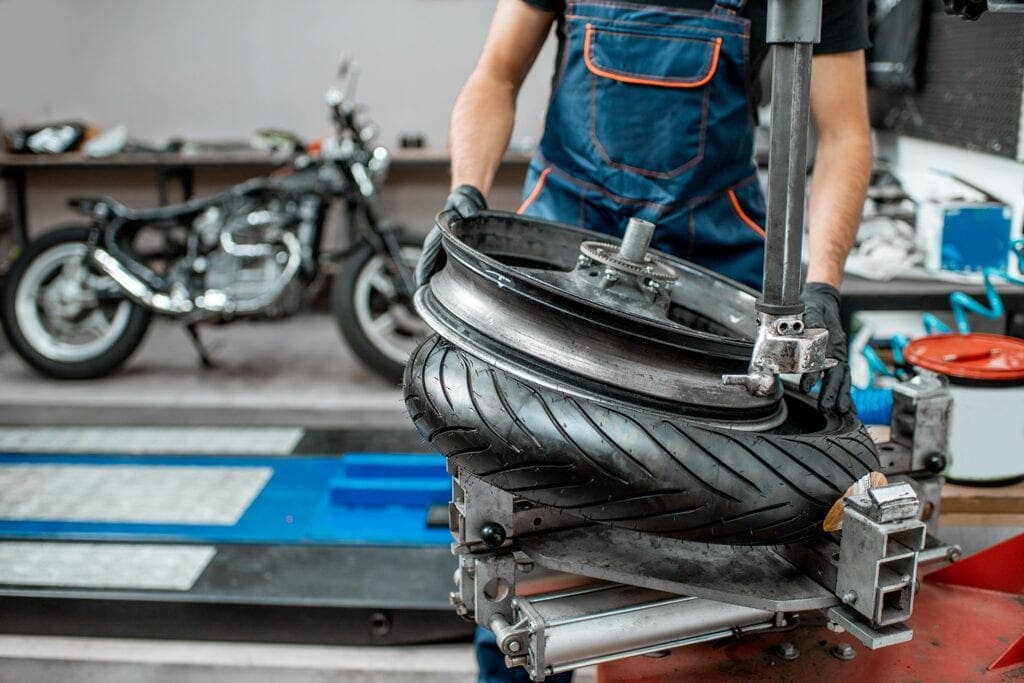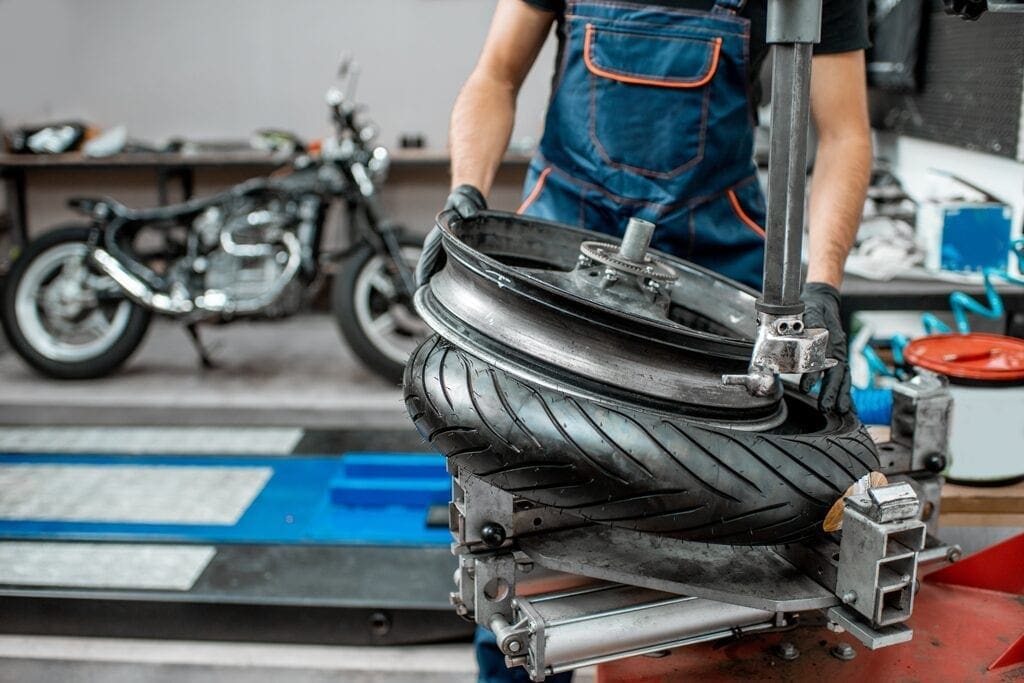
Slipper clutch or slipping clutch? There’s a big difference. Listen to any crowd of riders talking bikes and it seems like a foreign language. Just like any wide-eyed obsessive hobby, there’s a world of new words to learn. Here’s a helping hand.
Two-storke and four-stroke
Two-stroke engines are simple, with few moving parts. Imagine a piston moving up and down inside the engine and all a two-stroke needs is one turn of the cycle to fill the cylinder with fuel and air and another to combust it. One power stroke every two turns of the engine.
A four-stroke engine is similar to the one powering most cars and uses a complex system of valves and camshafts to meter fuel and air into the engine for combustion. Four-stroke engines are complex, heavy and much less powerful per cc because they need four cycles for each power stroke; one to suck the fuel in, another to squeeze it, one more for combustion and a final one to get rid of the exhaust gases. But they typically have much cleaner exhaust emissions and are more fuel-efficient too.
Enjoy everything More Bikes by reading monthly newspaper, Read FREE Online.
Two-stroke engines lubricate themselves with oil that is burnt in the cylinder during the combustion stroke. This oil needs regular topping up via a tank. Four-stroke engines recirculate their oil through the engine and only need periodic top-ups.
Camshafts
Camshafts control the opening and closing of the four-stroke engine’s valves to meter the fuel and air going in and exhaust gases going out. Most modern engines have double overhead camshafts (DOHC) which means two cams mounted above the engine – one controls inlet and the other controls exhaust.
Ram air
Engines burn fuel and air in exactly the right ratio to give the most power. It’s relatively easy to get more petrol into an engine – just use a bigger fuel pump- but getting more air in is harder. You could use a turbocharger or supercharger but they add complication and expense.
One much easier way is to force air into the bike’s airbox at high speed using air intakes mounted in the nose of the bike. This high-speed air rushes into the airbox and causes a build up of pressure which actively, ‘pushes air into the engine rather than the conventional method which draws air in by vacuum. The faster you go the more pressure you get and therefore the more power you add.
EXUP values
EXUP stands for Exhaust Ultimate PowerValve which is a system invented by Yamaha in the late 1980s to add midrange power to a highly tuned race bike engine. EXUP is an electronically controlled butterfly valve in the exhaust that opens at high revs and big throttle openings to vary the shape and volume of the exhaust pipe. This is important because exhaust gas travels in waves and EXUP uses those waves to drag the gas through more efficiently and so allow an engine to make more power. But because the waves behave differently at low and high revs, you need a variable exhaust valve to make the most of it.
The system is almost fully closed at low revs and opens at high rpm, which gives the added benefit that an EXUP-equipped exhaust is quieter at low revs and so needs less silencing. These days most manufacturers use a similar system in their pipes to keep the noise down.
Upside-down forks
The forks are the front suspension on a motorcycle. In the old days, you’d have the thinner parts (the stanchions) at the top and the thicker parts (the sliders) at the bottom. This changed in the late 1980s because the moving part of the forks is what’s known as unsprung weight which has a huge effect on the way a bike steers. The less unsprung weight you can have, the quicker and easier it is to change direction on a motorcycle.
So fork legs, wheels and brakes al I needed to become as light as possible. Turning the forks upside down made an enormous difference. It also makes them much more resistant to bending in a front end crash.
Grey imports
Bikes that were never officially imported to the UK but came in via an independent importer. Grey imports were very popular in the mid-1990s when the weakness of the Japanese currency made used machines very cheap over there.
The Japanese equivalent of the MoT test is so strict that most bikes over three years old are considered worthless and there were warehouses full of immaculate, low mileage bikes doing nothing.
Canny independent importers started shipping them to Britain. Many were 250-400cc sports bikes which were perfect for new riders. Fast enough and cool enough to be credible, but easy to ride too. Most popular were bikes like Honda’s VFR400, CBR400 and Bros 400/650.
Parallel imports
These were bikes that could also be bought officially in the UK that were brought in unofficially in the late 1990s because they were much cheaper in Europe and America than over here. Many of these bikes still wear kph speedos, still have headlights that dip to the right (which is illegal and should fail an MoT) and some, originally intended for France or Germany may be restricted to 1 00bhp. Don’t be put off, but don’t pay top whack either – a parallel imported machine is worth around £300 less than a UK bike.
Four-pot radial calipers
These are brakes and the four-pot thing refers to the number of pistons inside each brake caliper pushing against the brake pad. Radial refers to the mounting of the caliper to the fork leg. Radially mounted brakes are located further around the brake disc than traditionally mounted calipers. This reduces the flex and vibration caused by using upside-down forks and larger wheel spindles (which brace the fork legs) and in racing it allows teams to use different sized brake discs on a set of forks by simply adding spacers to the caliper mounts.
Rising rate linkage
Most of the rear suspension designs on modern bikes have just one shock absorber mounted in front of the back wheel. In order to fit in this small space, the shock needs to be short and so has a limited amount of travel. By attaching the shock to the frame via a Iinkage you can fit a unit that has softer damping for more comfort at low speed but is still firm enough over big bumps to control the bike.
So the first part of the travel is linear to the force from the road, but as the shock compresses it takes more force to make it compress further. Shocks without a linkage are known as ‘cantilever’ mounted and tend to be firmer to start with.
Slipping clutch
Slipping clutch Motorcycle clutches are fragile and one too many traffic light races or fluffed wheelie attempts will damage the clutch of many bikes. 1990s Yamahas are especially bad as are Ducat is and some Triumphs.
Clutch slip is where the clutch plates have overheated and lost some of their friction. As you rev the bike the clutch can’t hold the drive between the engine and gearbox. So the revs rise quickly but the bike goes no faster.
Slipper clutch
This is a device that allows you to go charging aggressively into a corner while changing down the gearbox and release the clutch, maybe in too low a gear without it locking the rear wheel. It works by controlling a limited amount of slip in the clutch unit and has become essential in racing but of limited use on the road where smoothness is the key to speed.
Chicken ‘strips’
It’s a term of derision aimed at the tyres of riders who might not lean over all the way to the edge. When this happens you’ll see a strip of unused rubber at either side of the tyre.
Don’t worry about it. Riding a bike is not a virility challenge. We all have to start somewhere and some people don’t measure manhood by lean angles. The more you ride, the more confident you will become and at some point the extra lean angle will come. And if it doesn’t, so what? When a bike leans over it always goes slower, so by the magic of lateral thinking riders who stay upright must be faster.
Swingarm
The bit that connects the rear wheel to the frame and holds the rear suspension is called the swingarm (sometimes the swinging arm) because, er, it’s an arm that swings. Simple huh?
Shock absorbers
The rear suspension units. Most modern bikes only -have one, older machines and smaller, commuter bikes have two. The advantages of a single shock absorber are compact design and more controlled performance because a single unit mounted ahead of the rear wheel can be short, which makes it easier to control the damping.
Twin shocks have some advantages – they sit further from the engine which makes them less likely to overheat and are easier to adjust – but they work independently which takes away suspension control in a corner.
Steering head beraings
The two front forks are held in place by plates called yokes through which passes a steering stem. At the top and bottom of the steering, stem are steering head bearings. These allow the steering to turn smoothly and are either individual ball bearings packed in grease or taper roller bearings encased in a cage.
Over time they wear or slacken off and will need either tightening or replacing. Slack or worn steering head bearings are felt as a clonk from the front of the bike when you brake. Adjusting them is easy, changing them is best left to a dealer.
Motorcycle frame types
A traditional cradle frame has loops that run on top of or underneath the engine. A beam (or twin spar) frame has solid beams that run around the side of the engine. A trellis frame is like a beam but made from a latticework of smaller tubes and a spine frame has a large top tube from which the engine hangs and no lower rails.
Advert
Enjoy everything More Bikes by reading the MoreBikes monthly newspaper. Click here to subscribe, or Read FREE Online.



